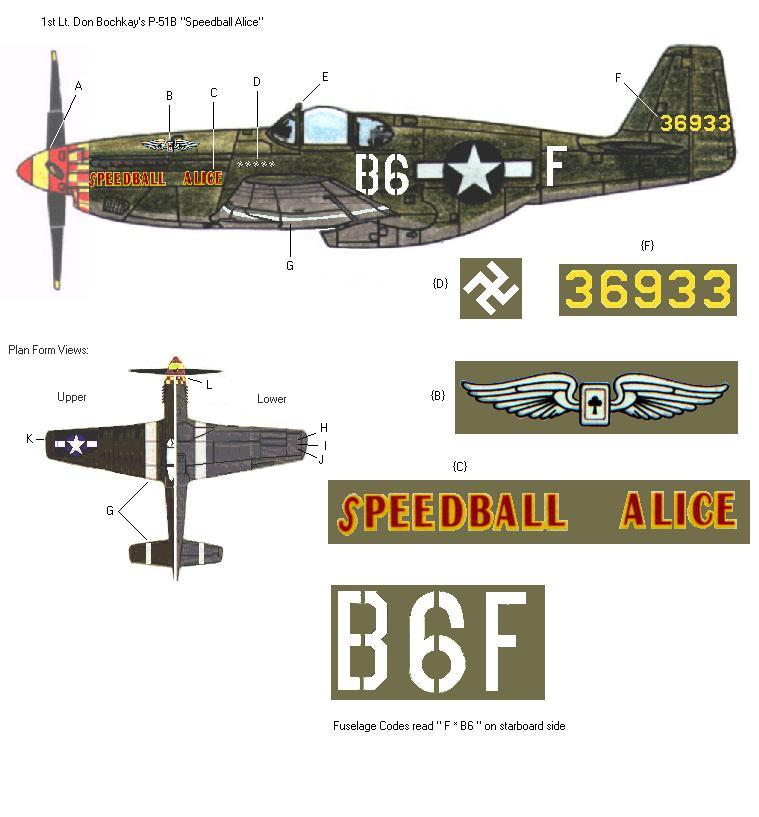357th FG Profile

1st Lt. Don Bochkay’s P-51B Mustang “Speedball Alice”

Spring 1944
Modeler Tips:
Side View Notes:
A. Rear red band on propeller boss extends onto spinner to leading edge of blades when in neutral pitch. Determine width of yellow band by dividing remainder of spinner evenly.
B. Winged ace of clubs- note red border in card.
C. “Speedball Alice” in red with bold yellow border.
D. Kill marks. Five white swastikas. Note that they are reversed so as to tilt back counter-clockwise.
E. RAF-style half-sphere mirror on swept pylon.
F. Tail number in yellow, “36” on fin, “933” on rudder.
G. White recognition stripes were of standard widths on wings and horizontal stabilizers.
Upper & Lower View Notes:
G. Repeat of item “G” from Side View Notes. H, I, J. Red, Green, Yellow navigation lights- circular and flush with wing panel.
K. Formation Lights- Red (Port) and Green (Starboard)
L. Width of checkers reduced on underside in order to fit evenly on the narrow surfaces of the chin scoop area.
Overall Modeling Tips:
*This aircraft wore dark olive green over USAAC medium gray. There were no antenna wires installed on this aircraft.
*After building several 357th A/C over the past 30 years, I recommend painting the nose area forward of the exhaust cutout yellow when the flat features are painted. Then when decal time comes, carefully cut away the yellow squares from the checkerboard decal and apply the remaining strip of red checkers to the nose. This method significantly reduces the potential for bubbles, and wrinkles plus it makes exact alignment of the decal easier.
*Prior to assembly, wash clear plastic parts with a mild glass cleaner and gently wipe dry. Then use a Q-Tip to evenly spread clear liquid floor wax (Future Brand seems to get the best results) on both inside & outside. Protect from dust and let dry for at least 2 hours. The wax fills in microscopic flaws and creates an even gloss that is clearer & shines brighter than the original plastic underneath.

